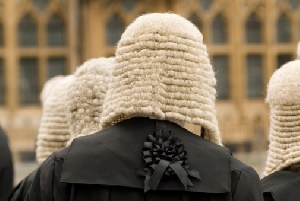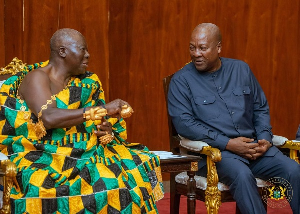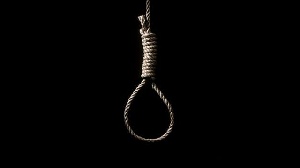I cannot get my head around how and why some renowned lawyers have been hiding behind moral and religious invocations and consistently condemning the actions of the men and women who have volitionally chosen to go contrary to the conventional way of making love.
I must, however, confess that I used to appal homosexuality so much until I completed international human rights law programme.
Even though I personally dislike the act, I am of the conviction that homosexuals have their inalienable human rights, and, can decide their sexual preference without any external interference.
And to those who think that homosexuality is a sin against Jehovah God, hasn’t it written: thou shall not judge?
And to those law luminaries who have been protesting vehemently against the act of homosexuality: aren’t human rights universal, interdependent, indivisible and interrelated?
Basically, being a human rights lawyer means challenging discrimination and defending the inalienable rights and freedoms of ordinary citizens and denizens.
This means defending, protecting and promoting those rights and freedoms irrespective of their race, religion, tribe, gender or sexual preference, and no matter where in the world they may be under threat.
In other words, a human rights lawyer is supposed to investigate, evaluate, and defend people in cases involving discrimination, torture and abuse amongst others.
What are Human Rights?
“Human rights are the basic rights and freedoms that belong to every person in the world, from birth until death.
“They apply regardless of where you are from, what you believe or how you choose to live your life.
“They can never be taken away, although they can sometimes be restricted – for example if a person breaks the law, or in the interests of national security.
“These basic rights are based on values like dignity, fairness, equality, respect and independence. But human rights are not just abstract concepts – they are defined and protected by national and international laws (EHRC).”
It is worth noting that a rich body of extant human rights literature attributes the emergence of the human rights regime to the past uncontrolled human rights abuses ( Waltz, 2001; Kabasakal, 2006 ).
Thus, following a concerted consensus in 1945, the United Nations adopted its Charter (UN 1945). The Charter stresses that the principal purpose of the United Nations is “to save succeeding generations from the scourge of war”, and “to reaffirm faith in fundamental human rights.”
What is more, Article 1 of the Charter stresses that one of the objectives of the United Nations is to achieve international consensus in “promoting and encouraging respect for human rights and for fundamental freedoms for all without distinction as to race, sex, language or religion.”
Moreover, in its attempt to promote and encourage the universality of human rights, the United Nations General Assembly tasked the Human Rights Commission to draft the Universal Declaration of Human Rights, which was adopted in 1948 (Un 1948).
In furtherance of the human rights project, the United Nations adopted simultaneously, two very important human rights covenants, the International Covenant on Civil and Political Rights, and International Covenant on Economic, Social and Cultural Rights in 1966.
Even though the Universal Declaration of Human Rights is not a legal binding document in isolation, it forms part of the International Bill of Rights. The International Bill of Rights is an amalgamation of the International Covenant on Civil and Political Rights, the International Covenant on Economic, Social and Cultural Rights and the Universal Declaration of Human Rights (Waltz 2001).
The fact that the Universal Declaration of Human Rights acknowledges that all human beings are born free and equal in dignity and rights, and more so when such rights are interdependent, interrelated, universal and indivisible, one would expect universal coverage of human rights.
However, it does not appear to be the case. For instance, the human rights of lesbian, gay, bisexual and transgender people are somehow non-existent in most countries (UN 2011).
Ironically, however, the legal obligations of States to protect the human rights of lesbian, gay, bisexual and transgender people are already detailed in international human rights law, which have been articulated severally in the Universal Declaration of Human Rights and other internationally agreed human rights treaties.
What is more, the International Covenant on Civil and Political Rights is candid on the universality, interdependence, interrelatedness and indivisibility of human rights.
For instance, Articles 2.1 and 26 of the International Covenant on Civil and Political Rights stress on universal coverage without discrimination. And, Article 17.1 emphasises that ‘no one shall be subjected to arbitrary or unlawful interference with his privacy, family, home, or correspondence, nor to unlawful attacks on his honour and reputation’. Whereas Article 17.2 stresses that ‘everyone has the right to the protection of the law against such interference or attacks’ (UN 1966).
It is also worthy of mention that all members of the human family are protected by the Convention against Torture and other Cruel, Inhuman or Degrading Treatment or Punishment (UN 1984).
But despite the enactment of all these pragmatic provisions, lesbian, gay, bisexual and transgender people are more often than not face discrimination and violations in most countries.
Under normal circumstances, though, once a human rights treaty is ratified by a state, it becomes legally binding on the said state (Neumayer 2005; Cole 2009).
Yet meta-analysis suggests that some States Parties often do not comply with the treaty obligations following ratification (Hathaway 2002, 2007; Hafner-Burton and Tsutsui 2005, 2007).
Interestingly, Mertus (2007) asserts that before 1993, the idea of "sexual rights” was non-existent in international documents. Mertus postulates that apart from the provisions prohibiting discrimination on the grounds of sex, the concepts of sexuality and sex practices were utterly absent. Mertus stresses that as a result of strenuous endeavours of a vociferous and well organized coalition of women's rights advocates, phraseologies of sexuality were included in the 1993 Vienna Declaration and Programme of Action.
Mertus, however, observes that despite the inclusion of sexuality in the 1993 Vienna Declaration and the Programme of Action, the idea of a right to sexuality was incorporated only in a negative sense, as in recognition of women's right to be free from sexual violence.
Mertus stresses further that it was not until the International Conference on Production and Development in 1994 that sexuality would "begin to sneak into international documents as something positive rather than always violent, abusive, or sanctified and hidden by heterosexual marriage and childbearing."
. In 2003, Brazil presented a statement to the UN Commission on Human Rights, hereafter, Human Rights Council, to endorse rights based on sexual orientation (UN 2011).
However, due to fierce opposition from other members of United Nations, the deferred statement was removed from the Human Rights Commission’s agenda.
Nevertheless, an important development arose in 2005 when New Zealand made a statement in favour of sexual orientation and human rights, which was subsequently supported by thirty two States from four of the five UN regions (UN 2011).
What is more, in 2006, a committee of human rights experts came up with the Yogyakarta Principles, which stress on the application of International Human Rights Law in relation to Sexual Orientation and Gender Identity (Yogyakarta 2006).
Furthermore, in 2006, joint statements were delivered by Norway on behalf of 54 States (UN 2011). And, in 2011, joint statements were delivered by Colombia on behalf of eighty five States (UN 2012).
The breakthrough however came in June 2011, when South Africa delivered a statement, resulting in HRC/RES/17/19, adopted by a recorded vote of twenty three to nineteen, with three abstentions (UN 2011).
Interestingly, the statement delivered by South Africa resulted in first United Nations resolution on sexual orientation and gender identity. The resolution sought to register “grave concern” at violence and discrimination against individuals based on their sexual orientation and gender identity.
More importantly, the adoption of the resolution prepared the grounds for the first official United Nations report on the issue produced by the Office of the High Commissioner for Human Rights. The report’s findings formed the basis of panel discussion that took place at the Council in March 2012, the first time a United Nations intergovernmental body had held a formal debate on the subject (UN 2012).
Thus, it is not surprising that in recent years, many States have made a determined effort to fortifying human rights protection for lesbian, gay, bisexual and transgender people, according to the United Nations 2012 report.
The report stresses that a cornucopia of new laws have been adopted – including laws banning discrimination, penalizing homophobic hate crimes, granting recognition of same-sex relationships, and making it easier for transgender people to secure official documents that represent their preferred gender (UN 2012).
In ending, in as much as the sceptics have their right in protesting against homosexuality, I would like to believe that the homosexuals also have their inalienable rights under the international law.
Opinions of Monday, 6 November 2017
Columnist: K. Badu















